Saint Lucia Flag Meaning
A cerulean blue field with a gold isosceles triangle in front of a white-edged black triangle. The design reflects the island’s natural features and cultural heritage.
- Continent
- North America
- Adopted
- 1967
- Ratio
- 1:2
- Colors
- blue, black, white, yellow
- Designer
- Dunstan St. Omer
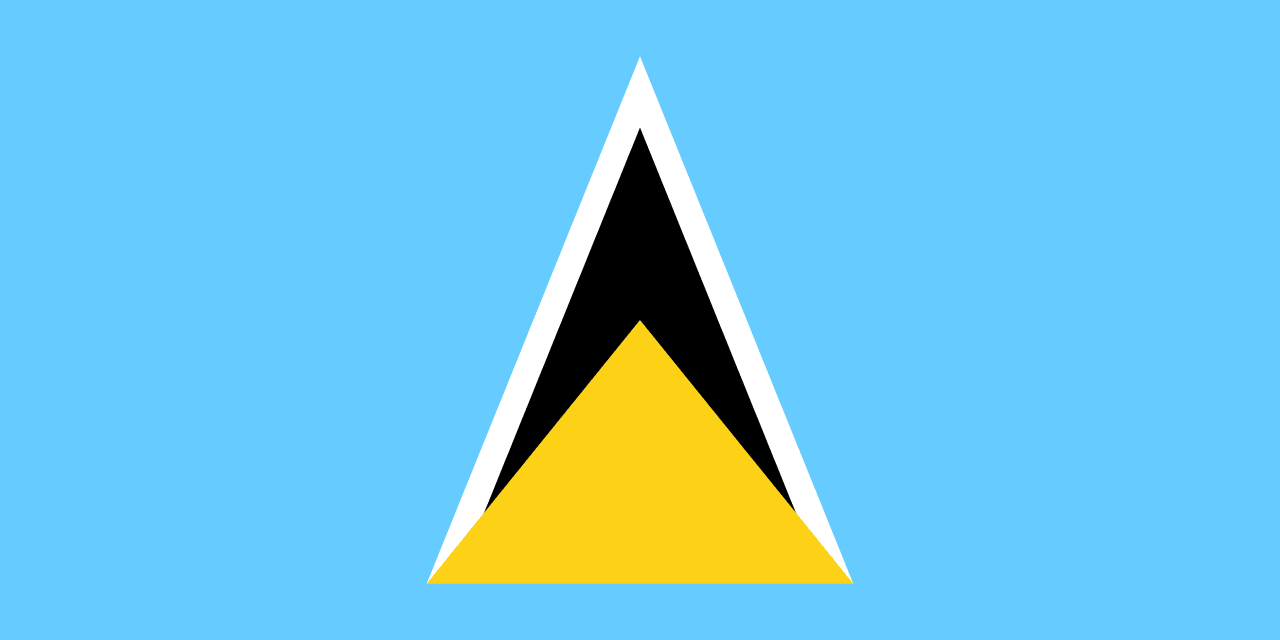
Symbolism
Blue Field: Represents the surrounding Caribbean Sea and Atlantic Ocean.
Gold Triangle: Symbolizes sunshine and prosperity.
Black and White Triangle: Represents the harmonious relationship between the island’s diverse races.
Twin Peaks: The triangles also evoke the Pitons, Saint Lucia’s iconic volcanic mountains.
History
- Pre-Colonial Era: Originally inhabited by the Arawak and later the Kalinago (Carib) peoples.
- 17th–18th Centuries: Changed hands between the French and British 14 times, earning the nickname 'Helen of the West Indies.'
- 1814: Britain secured control under the Treaty of Paris.
- 1967: Became an associated state of Britain and adopted its flag.
- 1979: Achieved full independence on February 22, retaining the flag with minor modifications.
Trivia
- Saint Lucia is the only country in the world named after a woman — Saint Lucy of Syracuse.
- The Pitons, depicted on the flag, are a UNESCO World Heritage Site.
- The island is known for its annual Saint Lucia Jazz Festival.
- Tourism and banana exports are central to the economy.
- The designer of the flag, Dunstan St. Omer, was a prominent Saint Lucian artist.
Related Countries
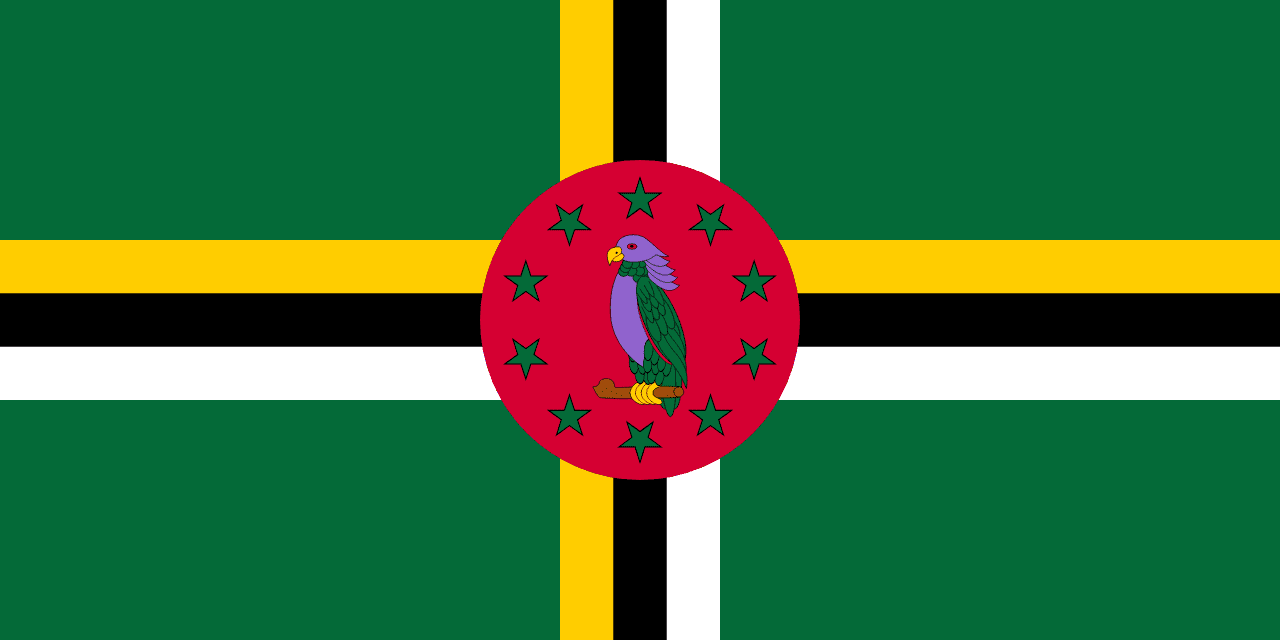
Dominica
North America
A green field with a cross pattern of yellow, black, and white stripes and a red circle in the center containing the Sisserou parrot, representing the lush vegetation, the Trinity, racial harmony, and the unique wildlife of the 'Nature Island of the Caribbean.'
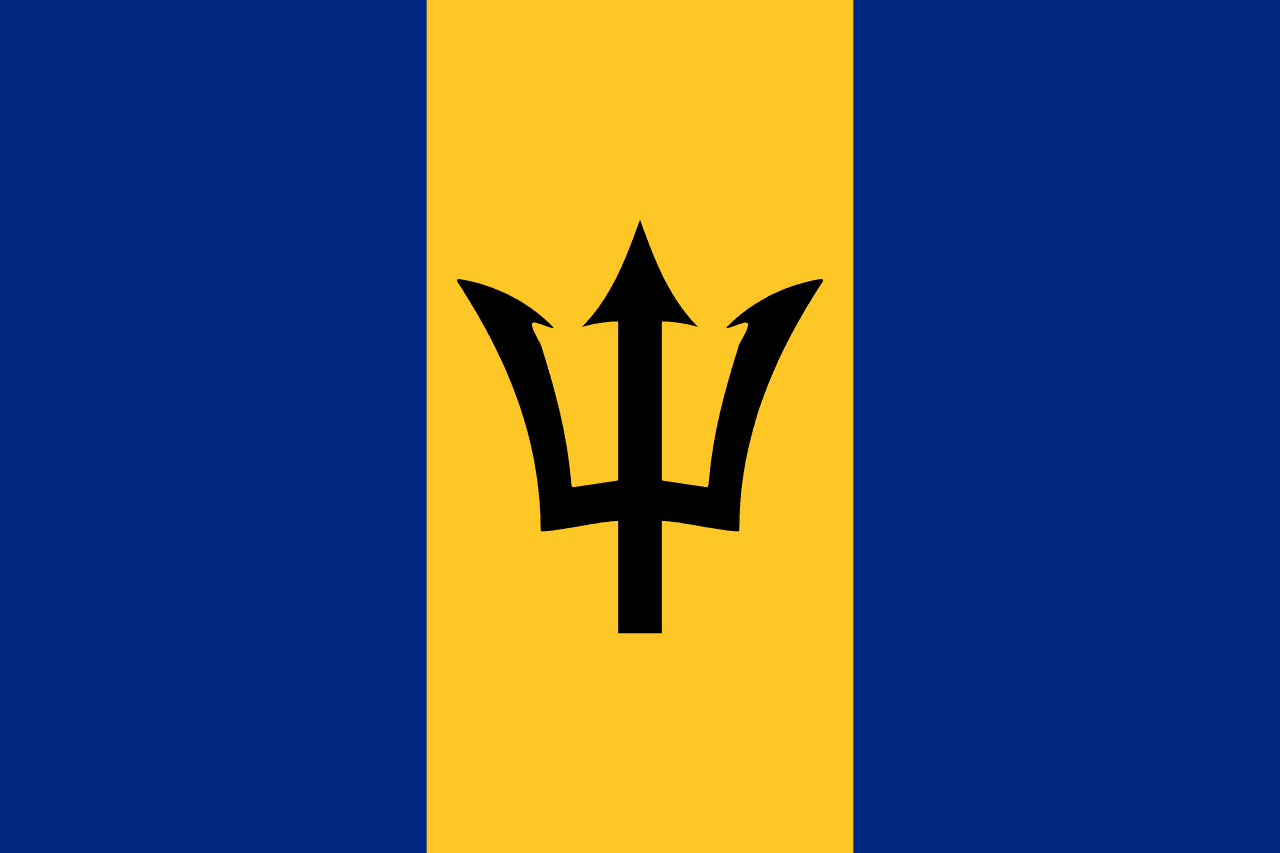
Barbados
North America
Three vertical stripes of ultramarine blue, gold, and ultramarine blue with a black trident head (broken from its staff) in the center golden stripe, representing the sea surrounding the island, the golden sands of its beaches, and the break from colonial dependence on Neptune's trident symbol.
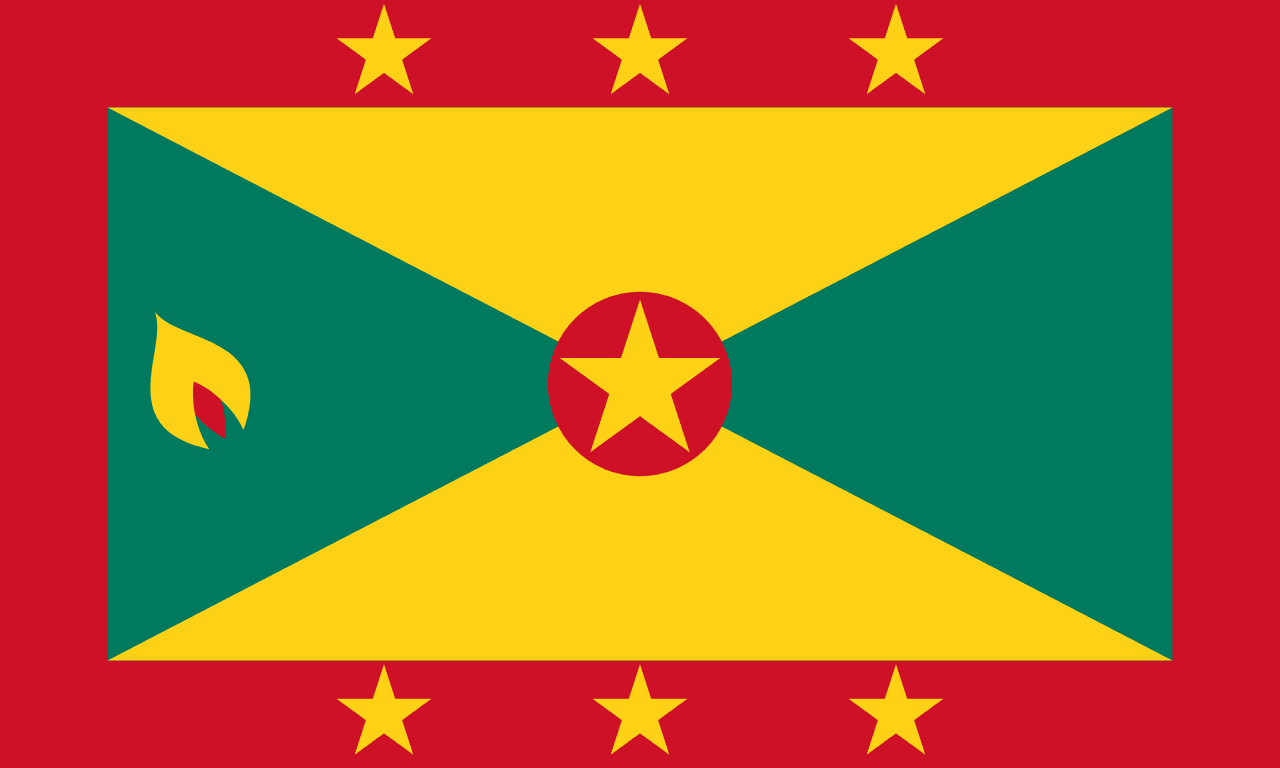
Grenada
North America
A red border surrounding yellow and green triangular sections with seven gold stars and a nutmeg symbol, representing the warmth of the people, sunshine and agriculture, vegetation and youth, and Grenada's fame as the 'Spice Island.'

Guyana
South America
A green field with a yellow arrowhead bordered in white pointing toward the fly, and a red triangle bordered in black at the hoist, known as 'The Golden Arrowhead,' representing the country's natural resources, diversity, and forward progress.
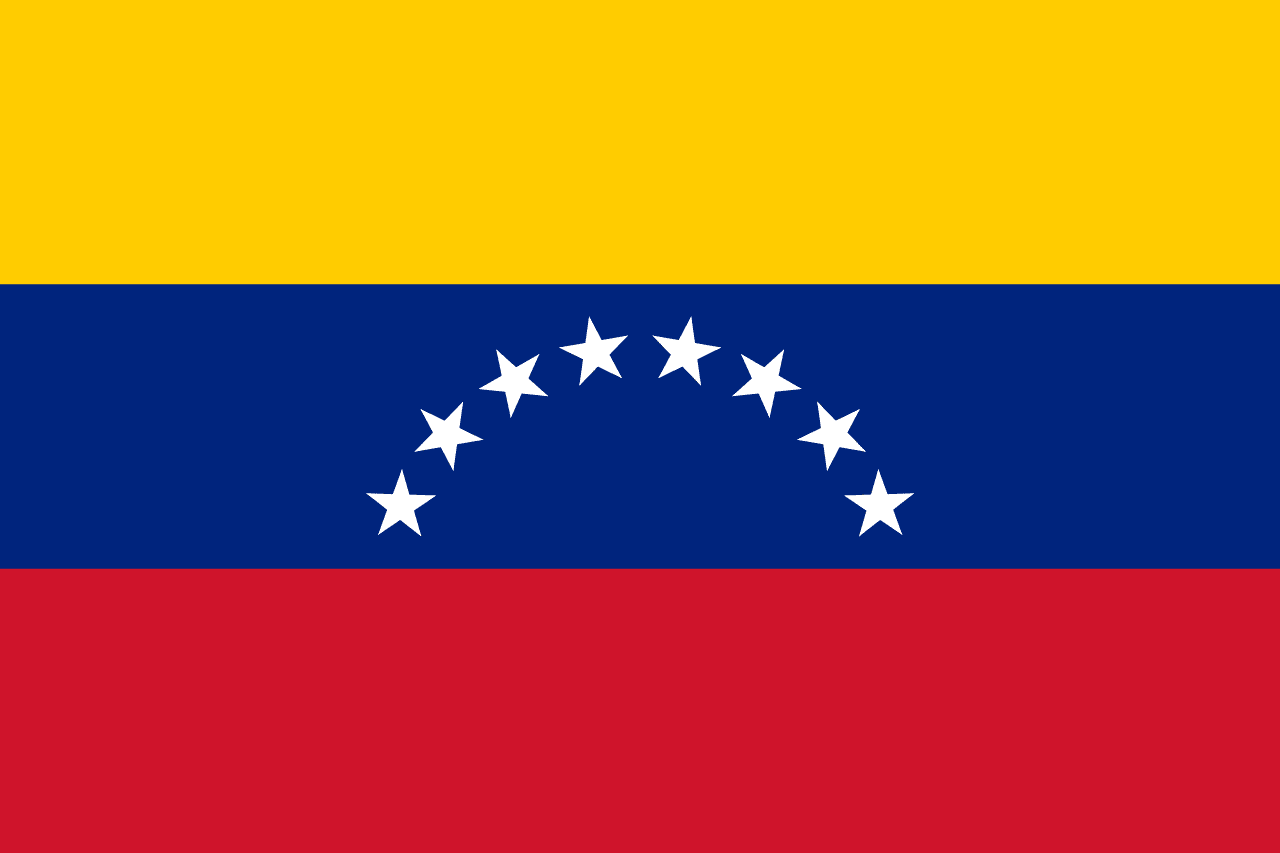
Venezuela
South America
Three horizontal stripes of yellow, blue, and red with eight white stars in an arc on the blue stripe and the coat of arms on the upper hoist corner, representing the wealth of the land, the seas separating Venezuela from Spain, the blood shed for independence, and the eight original provinces that declared independence.
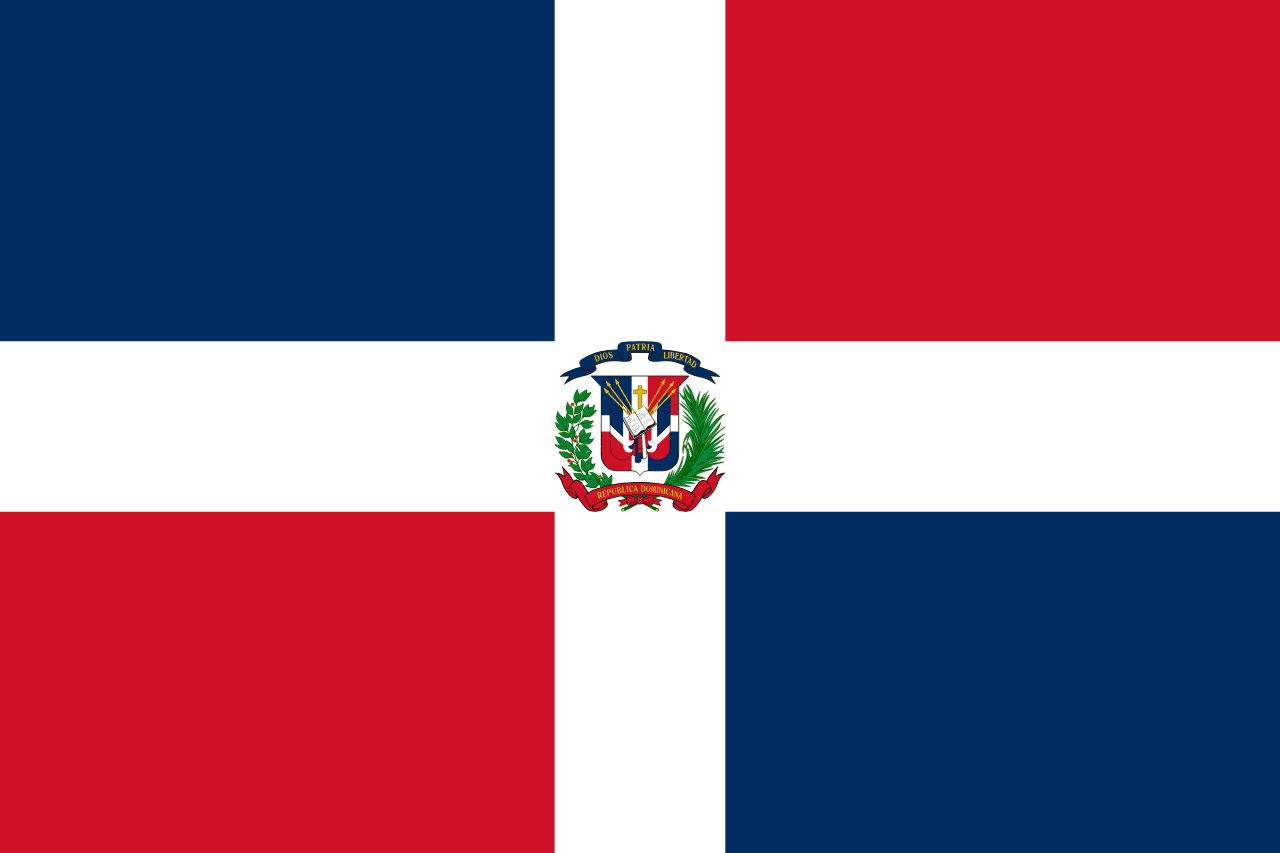
Dominican Republic
North America
Four quarters alternating blue and red separated by a white cross, with the national coat of arms in the center, representing liberty, the blood of heroes, salvation and peace, and the Christian faith of the Dominican people.